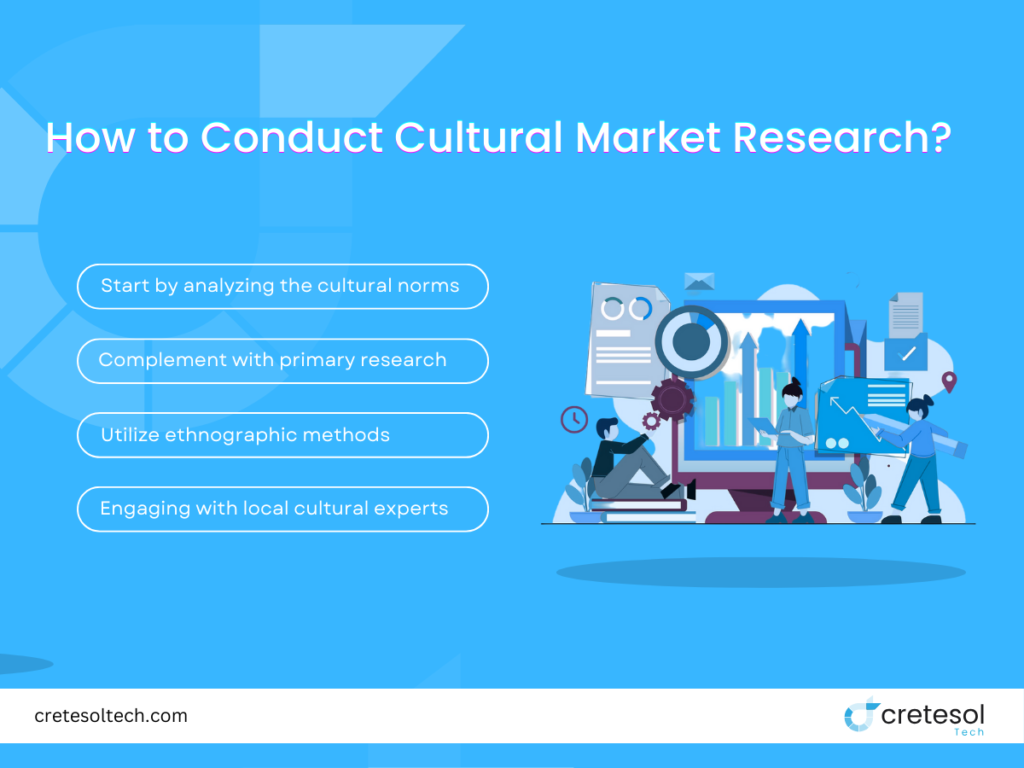When you are in a global market, you come across businesses, customers, clients, and vendors from diverse cultural backgrounds. Developing cross cultural communication in global marketing is a key factor in a business’s revenue growth and visibility. Therefore, companies must overcome communication barriers in international marketing to attain success in the global market. Without cross cultural communication in global marketing, your business could lose profit, reputation, and the ability to bring in new customers or retain existing ones. Following best practices for cross-cultural communication is vital for embracing diverse cultural backgrounds to create a deeper relationship with your target customers.
Understanding Cross Cultural Communication
Cross cultural communication is the way people from diverse cultural backgrounds communicate with each other. Our language, attitudes, patterns, and even nonverbal communication styles are directly related to our cultures.
Due to globalization and increased market awareness, cultural intelligence has become a significant factor in carrying our marketing communication. For instance, American entrepreneurs consider direct eye contact a good way to showcase their confidence and convey their interest in the conversation. On the contrary, Asians might consider eye contact a form of disrespect. When you grasp these Cultural Considerations in Global Marketing, particularly the differences in the perception of nonverbal cues, you can adapt your approach during business discussions.
Conducting Cultural Market Research
Conducting cultural market research for mastering cross cultural communication in global marketing involves a multi-faceted approach. These steps are useful for the cross-cultural market research:

- Start by analyzing the cultural norms, values, and communication styles of your target market through secondary research such as academic articles, market reports, and cultural studies.
- Complement this with primary research, including surveys, focus groups, and in-depth interviews with local consumers and business professionals.
- Utilize ethnographic methods to observe real-life interactions and social behaviors within the target culture.
- Additionally, engaging with local cultural experts and consultants can provide nuanced insights and practical advice.
These research methods can help you develop a deep understanding of the cultural nuances that influence communication and marketing effectiveness in your global market.
Customizing Marketing Messages
Personalization is a key component in the digital age. Understanding and incorporating the cultural nuances into your target customer’s journey can considerably enhance the customer experience. To ensure your marketing messages are customized when it comes to cross cultural communication in global marketing, take the following actions:
Tailored Content:
To influence the target audiences of different demographics, ensure your promotional or advertising content is culturally friendly and appropriate. Cultural Adaptation in Marketing materials of your brand such as images, messages, colors, and symbols must resonate with specific cultural groups.
Targeted Marketing Strategies:
Create marketing campaigns that align with the cultural norms and communication preferences of your target audience. Moreover, utilizes data analytics to get insights into purchasing behaviors and preferences across various cultures.
Adapting Visual Content and Branding
Visual elements of a brand or a business have the ability to make a lasting impact in the audience’s mind. The imagery and symbolism portrayed in the ads, covers or photos have a direct Cultural Impact on Consumer Behavior. Not tailoring your visual content to the cultural aesthetics and preferences of each target market might bug the customer base the wrong way. Also, understanding cultural symbolism and avoiding potentially offensive visuals is essential.
Furthermore, the tone and style of visual content should reflect local values and social norms. For this purpose, collaborating with local designers and cultural experts can ensure authenticity and relevance. By thoughtfully adapting visual content, brands can create a strong emotional connection with their audience. It helps to enhance brand perception and engagement in different cultural contexts. Hence, customizing visual content is a vital component for mastering cross cultural communication in global marketing.
Leveraging Local Influencers and Partnerships
As much as you try to integrate into a foreign market, you cannot exactly replicate the language, accents, and tone of that culture. That is where collaborations with local influencers come in handy. On one hand, partnering the local social media influencers gives you access to new audiences. Secondly, you can better communicate or convey your brand messaging since the influencers become the ambassadors of your brand.
Leveraging local influencers and partnerships is a powerful strategy for enhancing cross cultural communication in global marketing. To do this effectively, start by identifying influencers and partners who have a strong presence and credibility within the target market. Collaborate with these local figures to create authentic and culturally relevant content that resonates with the audience. Their insights and understanding of local preferences can guide the messaging and tone of your campaigns.
A widely popular cold drink company Coca-Cola has mastered the art of marketing its product across the globe through partnerships. For example, when expanding into Africa, the company partnered with a franchise partner in South Africa to execute its strategy. By partnering with someone knowledgeable about the regional landscape, Coca-Cola successfully entered the African market.
Localizing Product Offerings
A product offering is defined as the combination of services, products, and experiences provided to the customers. Since the global market is comprised of customers of different cultures, the brands have to regularly personalize the product offerings to cater to the local audience. To stay relevant in the local market, modifying the product features, packaging, and branding to reflect local aesthetics and cultural significance will do the trick.
Moreover, Incorporate local languages and symbols to enhance relatability and appeal. In short, localizing product offerings for mastering cross cultural communication in global marketing depends on how deeply you understand the cultural tastes and how to prepare a product that tempts the customers.
Navigating Cultural Sensitivities
At the heart of cross cultural communication in global marketing lies the recognition and respect for cultural diversity. Culture influences how individuals perceive businesses, products, and customer service, shaping their expectations and defining their comfort zones. For example, while assertiveness in communication might be appreciated in some Western cultures, it could be perceived as off-putting in more conservative societies where indirect communication is the norm.
The following methods might help you better navigate the cultural sensitivities.
Cultural Sensitivity Training
Regularly train your team to be culturally aware. This should go beyond basic language skills and extend into understanding cultural nuances, non-verbal communication styles, and social etiquette to enhance cross cultural communication in global marketing.
Create Customer Personas
Create detailed customer personas for your key markets, incorporating cultural preferences, values, and communication styles to guide your marketing and customer service strategies effectively in cross cultural communication in global marketing.
Building Long-Term Relationships
Building long-term relationships is essential for mastering cross cultural communication in global marketing. Establish trust and mutual respect by investing time in understanding the cultural backgrounds and values of your partners and clients. Effective cross cultural communication in global marketing involves maintaining consistent and transparent communication, respecting local customs, and showing genuine interest in the well-being of your counterparts. Regularly engage with local stakeholders through culturally appropriate channels and celebrate local traditions and milestones together. By prioritizing these efforts, you can foster strong, lasting relationships that enhance your success in global markets.
Conclusion
Mastering cross cultural communication in global marketing is indispensable for businesses today. Its benefits include enhanced reputation, expanded customer reach, and increased profitability. By understanding and respecting cultural nuances, companies can tailor their Marketing Strategies to resonate deeply with diverse audiences. Strong relationships with local stakeholders—customers, partners, and influencers—are pivotal for sustained growth. Integrating these practices into marketing strategies not only attracts new customers through personalized messages and offerings but also fosters loyalty and enhances brand credibility globally. Cross cultural communication in global marketing serves as a cornerstone of competitive advantage. Businesses should invest in cultural intelligence training, and continually refine strategies based on thorough market insights and feedback to ensure ongoing success in global markets.
Discover the art of culturally resonant global marketing with Cretesol Tech. Let our seasoned experts guide your business toward thriving in diverse markets with creativity and precision. Reach out today and realize your global potential.
FAQs
What are the main challenges in cross cultural communication for global marketing?
Cross cultural communication in global marketing faces challenges such as navigating nuanced cultural differences, potential misinterpretations of nonverbal cues, persistent language barriers, and the critical need to understand and respect local values and norms.
How can businesses effectively tailor their marketing messages to different cultures?
Businesses can tailor their marketing messages effectively by conducting thorough research into cultural preferences, adapting language and imagery to resonate with local sensibilities, integrating local values into their campaigns, and collaborating closely with cultural experts and local influencers.
What tools can help with conducting cultural market research?
Tools for conducting cultural market research include ethnographic methods for observing real-life interactions, surveys and focus groups to gather direct insights from local consumers, consultation with cultural experts to interpret findings in context, and analysis of comprehensive market reports to understand broader trends and preferences.

 United Arab Emirates
United Arab Emirates